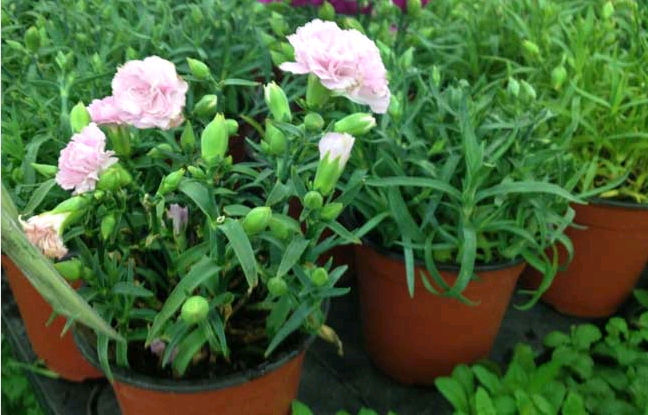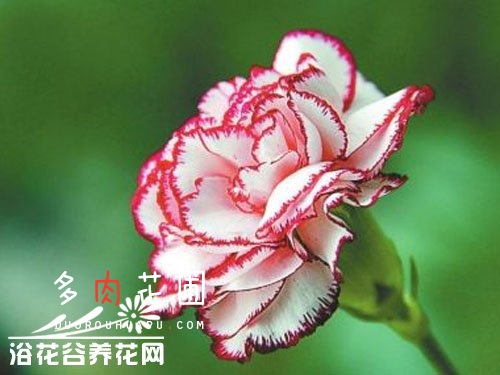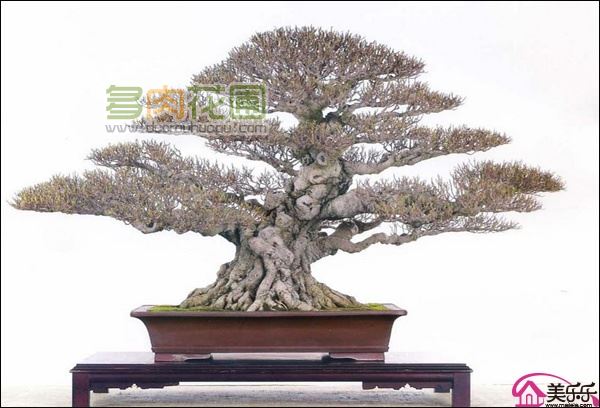How do carnations propagate and manage?
Carnations are generally propagated by cuttings. Cuttings are carried out in early spring. The third to fourth lateral buds in the middle of the branch were selected as cuttings, and the sprouting branches in the rhizosphere were the best. Cutting is more suitable when flower buds are formed. Cuttings should be cut immediately after cutting. On a cloudy day or in the morning. After cutting the cuttings, the cut section at the base is stained with charcoal powder to avoid water loss and is not conducive to survival.
The soil is suitable for river sand, with a depth of about 2 cm. Immediately after cutting spray, sprinkle water, but do not make too much moisture, so as not to cause cuttings rot. Avoid direct sunlight, keep room temperature 10: 13 ℃, after about a month, you can take root. After rooting, the light can be gradually increased. It was planted about 50 days after cuttage. When the terminal bud grows again after the slow seedling is planted separately. Start fertilizing. Generally apply dilute dung water every 10 days, but don't water too much. In the period of vigorous growth, flowering and summer, watering should be strengthened. The seedlings are coring when there are more than 5 pairs of leaves. The second coring was carried out when there were more than 3 pairs of leaves in the lateral branches.
Finally, 12-15 lateral branches of the whole plant were the best. Can also pick the heart again, promote the occurrence of lateral branches, flowering and reproduction. The last pick period should not be later than mid-August at the latest. The seedling transplanting period should not exceed the beginning of July at the latest, otherwise, it will make a great noise on the growth and flowering of the plant. Carnation should set up a bracket in time, except for 2 or 3 lateral branches at the base to blossom, the axillary buds and lateral flower camps on the other lateral branches should be removed in time. Cut carnations are cut in the morning or evening and take blooming branches.
How to reproduce carnations? how to reproduce carnations?

The propagation methods of carnations are generally through seed sowing, striping propagation, tissue culture and cutting propagation, which are introduced in detail below. I hope it will be helpful to cultivate carnations and let them breed carnations better.
How to propagate carnations 1. Seed sowing and propagation of carnations
The germination temperature of carnation seeds should be about 20 ℃. The seeds should be sowed indoors in early spring or in the open field from September to October, and should be protected and overwintered in winter. The temperature should not be higher than 15 ℃ or lower than 0 ℃.
2. Carnation striping propagation
Carnation embossing is carried out from August to September, select long branches, cut the skin with a knife in contact with the ground, press the soil, and after 5 to 6 weeks, it can take root and survive.
3. Tissue culture of carnation
Tissue culture and propagation of carnation is an important means to produce virus-free plants. cut flowers are widely used in cut flower production, generally using stem tip for detoxification culture, and then a large number of propagation.
Course on cutting Propagation of Carnation 1. Selection of cuttings
Select pest-free, robust growth, close internodes of the plant, and have 3 pairs of unfolded leaves, 1 pair of unexpanded leaves, population cuttings with flower bud rate less than 10%.
2. Take cuttings
The adoption of cuttings is generally carried out at the same time as the sprouting of carnations. Cuttings should be picked according to the standard, and sprouts should be broken by hand instead of scissors to avoid virus cross-infection. There should be a slight trunk cortex at the base, but the mother branch should not be damaged. 4-5 top leaves of the cuttings should be retained and the rest should be removed. After finishing into bundles, soak in water for 30 minutes to make the cuttings absorb enough water. The section should be close to the internodes and treated with growth regulators in order to improve the survival rate and emergence rate.
3. Cuttings storage
Storage cuttings can provide great convenience for year-round seedling cultivation and balanced flower supply throughout the year, and can carry out batch operation at one time to save manpower and material resources. The storage temperature is 1: 2 ℃, and the smaller the variation, the better, the better. The cuttings are treated with water loss slightly before storage, and the cuttings are packaged with ultra-thin plastic film.
4. Cutting time
Generally, we should avoid the hot summer from July to August, require good cutting quality, use perlite with larger particles as the cutting parent material, good water quality, and the cutting bed is a table.
5. Cutting method
When cutting, it is appropriate to insert 1 cm of medium, and deep cutting in summer, generally 1.5-2 cm. After cutting to spray enough water, later control should not be too wet, so as not to rot the root.
6. Cutting management
The slotting machine should have intermittent spraying facilities, and the amount of spray should be controlled to make the blade just wet. If there is no spray, cover the plastic film and use the Reed curtain after 1 week, but do not block too much light to prevent overgrowth. Transplant when the root of the cuttage is 1 cm long, pay attention to less root damage.
How do carnations reproduce? Introduction to the breeding methods of Carnation
The reproduction of carnation is divided into asexual reproduction and sexual reproduction. Sexual reproduction tends to have low seed setting rate, great variation in seed progeny and slow growth of seedlings, so it is less used in production and a large number of asexual reproduction is used in production, mainly cutting propagation. Its advantages are rich cuttings, stable characters and quick results. Let's take a look at it.
Seed propagation of carnation
The germination temperature of carnation seeds should be about 20 ℃. The seeds should be sowed indoors in early spring or in the open field from September to October, and should be protected and overwintered in winter. The temperature should not be higher than 15 ℃ or lower than 0 ℃.
Carnation striping propagation
Carnation embossing is carried out from August to September, select long branches, cut the skin with a knife in contact with the ground, press the soil, and after 5 to 6 weeks, it can take root and survive.
Tissue culture of carnation
Tissue culture and propagation of carnation is an important means to produce virus-free plants. cut flowers are widely used in cut flower production, generally using stem tip for detoxification culture, and then a large number of propagation.
Cutting propagation of carnation
1. Selection of cuttings: select plants with no diseases and insect pests, strong growth and close internodes, with 3 pairs of unfolded leaves and 1 pair of unexpanded leaves, and the percentage of flower buds of population cuttings is less than 10%.
2. Cuttage adoption: cuttings are generally taken at the same time as the sprouting of carnations. Cuttings should be picked according to the standard, and sprouts should be broken by hand instead of scissors to avoid virus cross-infection. There should be a slight trunk cortex at the base, but the mother branch should not be damaged. 4-5 top leaves of the cuttings should be retained and the rest should be removed. After finishing into bundles, soak in water for 30 minutes to make the cuttings absorb enough water. The section should be close to the internodes and treated with growth regulators in order to improve the survival rate and emergence rate.
3. Cuttings storage: storage of cuttings can provide great convenience for year-round seedling cultivation and balanced flower supply throughout the year, and can be operated in batches at one time to save manpower and material resources. The storage temperature is 1: 2 ℃, and the smaller the variation, the better, the better. The cuttings are treated with water loss slightly before storage, and the cuttings are packed with ultra-thin plastic film.
4. Cutting time: generally, we should avoid the hot summer from July to August, require good cutting quality, use perlite with larger particles as the cutting parent material, good water quality, and the cutting bed is a table.
5, cutting method: when cutting, it is appropriate to insert 1 cm of medium, and deep cutting in summer, generally 1.5-2 cm. After cutting to spray enough water, later control should not be too wet, so as not to rot the root.
6. Cutting management: the cutter should have intermittent spraying facilities, and the spray amount should be controlled to make the leaves just wet. If there is no spray, cover the plastic film and use the Reed curtain after 1 week, but do not block too much light to prevent overgrowth. Transplant when the root of the cuttage is 1 cm long, pay attention to less root damage.
- Prev

How do carnations propagate by cuttings?
Carnation is mainly propagated by cutting. Because of the many sources of cutting materials, fast growth and high survival rate, it is beneficial to speed up propagation. Cuttings can be cut in all seasons except the hot summer season. In production, indoor cutting from January to March is suitable, so that it can blossom in winter and spring. Especially from January to February.
- Next

How to cultivate old banyan bonsai?
Tree stump bonsai pay attention to old, but the wild old banyan stump is very limited. In recent years, through the cultivation of young trees, climbing shape continues to increase, in order to make the trunk and roots of young trees become old, we can take the following manual processing methods: (1) aluminum wire climbing. Climb the trunk with soft aluminum wire, when the aluminum wire will be trapped, release it.
Related
- Fuxing push coffee new agricultural production and marketing class: lack of small-scale processing plants
- Jujube rice field leisure farm deep ploughing Yilan for five years to create a space for organic food and play
- Nongyu Farm-A trial of organic papaya for brave women with advanced technology
- Four points for attention in the prevention and control of diseases and insect pests of edible fungi
- How to add nutrient solution to Edible Fungi
- Is there any good way to control edible fungus mites?
- Open Inoculation Technology of Edible Fungi
- Is there any clever way to use fertilizer for edible fungus in winter?
- What agents are used to kill the pathogens of edible fungi in the mushroom shed?
- Rapid drying of Edible Fungi

